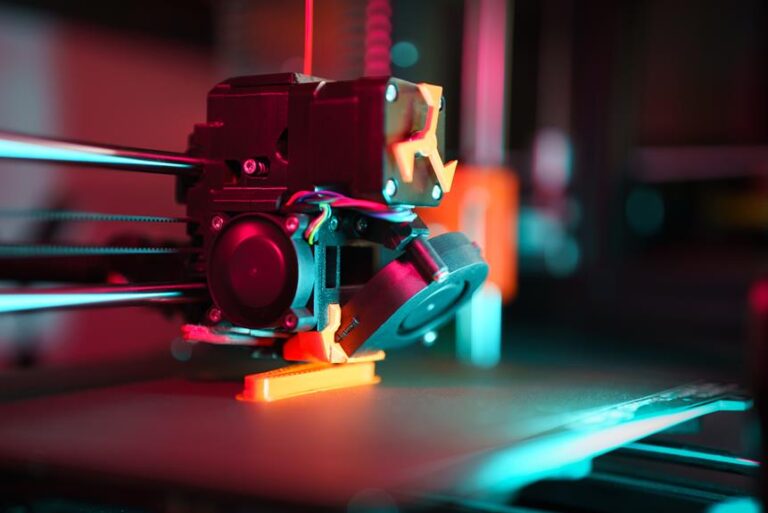Nylon Filament: A Comprehensive Guide to Durable 3D Printing
Unlock the potential of 3D printing with the ultimate guide to nylon filament. From its remarkable strength to its unmatched flexibility, this comprehensive article dives deep into the world of durable 3D printing.
Discover the applications of nylon filament across various industries and gain valuable insights on achieving high-quality prints.
Overcome challenges, explore post-processing techniques, and compare nylon filament with other 3D printing materials.
With this informative resource, you'll unleash the true power of nylon filament and elevate your printing game.
Key Takeaways
- Nylon filament is popular for its mechanical properties and versatility.
- Nylon filament is durable and suitable for creating functional parts.
- Nylon filament has excellent tensile strength, impact resistance, and flexibility.
- Nylon filament is suitable for a wide range of applications, including automotive, aerospace, medical, fashion, and sports.
The Basics of Nylon Filament for 3D Printing
The selection of nylon filament is crucial for achieving high-quality and durable 3D prints. Nylon filament is a popular choice among 3D printing enthusiasts due to its excellent mechanical properties and versatility.
One of the key advantages of using nylon filament is its durability, making it suitable for creating functional parts that can withstand stress and wear.
When choosing a nylon filament for 3D printing, it is important to consider its properties. Nylon filaments typically have a high melting point, which allows for the creation of heat-resistant prints. Additionally, nylon filaments have good layer adhesion, resulting in strong and durable prints. They also exhibit excellent tensile strength, making them ideal for parts that require flexibility and resilience.
Another important factor to consider is the moisture absorption property of nylon filaments. Nylon has a tendency to absorb moisture from the air, which can affect the print quality and lead to warping or bubbling. It is recommended to store nylon filament in a dry environment and use a filament dryer before printing to mitigate moisture-related issues.
Understanding the Strength of Nylon Filament
When it comes to nylon filament, understanding its strength is crucial for successful 3D printing. One key aspect to consider is the filament's tensile properties, which determine its ability to resist breaking under tension.
Nylon filament is known for its high tensile strength, making it a popular choice for durable prints. Additionally, nylon filament offers excellent impact resistance, allowing it to withstand sudden forces without cracking or breaking.
Lastly, its flexibility enables the creation of functional prints that can withstand bending or twisting without snapping.
Filament Tensile Properties
An understanding of filament tensile properties is essential for assessing the strength of nylon filament in 3D printing. Tensile properties refer to the ability of a material to withstand stretching or pulling forces without breaking. When it comes to nylon, it is known for its high tensile strength, making it a popular choice for various applications in 3D printing.
To better understand the tensile properties of nylon filament, it is helpful to look at key parameters such as tensile strength, tensile modulus, and elongation at break. Tensile strength measures the maximum amount of stress a material can withstand before breaking. Tensile modulus, on the other hand, indicates the stiffness of the material. Lastly, elongation at break measures the amount of stretch a material can undergo before breaking.
Here is a table summarizing the tensile properties of nylon filament:
| Property | Value |
|---|---|
| Tensile Strength | High |
| Tensile Modulus | Moderate to High |
| Elongation at Break | High |
Nylon filament exhibits high tensile strength, allowing it to withstand significant pulling forces. Its moderate to high tensile modulus gives it the necessary stiffness for structural applications. Additionally, nylon filament has a high elongation at break, meaning it can stretch considerably before reaching its breaking point. These properties make nylon filament an excellent choice for producing durable and strong 3D prints.
Impact Resistance Advantages
Nylon filament is known for its exceptional impact resistance properties, making it an ideal material for applications that require durability and toughness. The impact resistance of nylon filament is attributed to its unique molecular structure, which provides excellent energy absorption capabilities. This means that nylon printed objects can withstand sudden forces and impacts without breaking or deforming.
In 3D printing, understanding the strength of nylon filament allows for the creation of functional and reliable prototypes, parts, and tools that can withstand impact and stress. By utilizing nylon filament in 3D printing projects, designers and engineers can achieve greater freedom in design, as well as produce end-use parts that can withstand harsh environments and demanding applications.
The benefits of understanding the strength of nylon filament in 3D printing are significant. It allows for the production of prototypes that accurately represent the final product, reducing the need for costly iterations. It also enables the creation of functional parts that can be used in real-world applications, saving time and money on traditional manufacturing methods. Additionally, the impact resistance of nylon filament ensures that printed objects will be able to withstand the rigors of everyday use, increasing their lifespan and reliability.
Flexibility for Functional Prints
Flexibility plays a crucial role in the strength and functionality of nylon filament in 3D printing. The ability of nylon to bend and stretch without breaking makes it an excellent choice for creating functional prints that require durability and resilience. Nylon filament's flexibility allows for the production of parts that can withstand repeated use and stress, making it suitable for applications such as mechanical components, gears, and prosthetics.
To better understand the strength of nylon filament, let's take a look at the table below:
| Property | Nylon Filament |
|---|---|
| Tensile Strength | High |
| Elongation at Break | 100-500% |
| Flexural Strength | High |
As shown in the table, nylon filament exhibits high tensile strength, which means it can withstand significant pulling forces. Additionally, it has a high elongation at break, indicating its ability to stretch before breaking. Moreover, nylon filament demonstrates high flexural strength, enabling it to endure bending and twisting forces. These properties make nylon filament an ideal choice for functional prints that require flexibility and strength.
Exploring the Flexibility of Nylon Filament
By examining the various applications and properties, one can gain a comprehensive understanding of the inherent flexibility of nylon filament in 3D printing. Nylon filament offers a range of benefits that make it an excellent choice for flexible prints.
Here are four key aspects to consider:
- High Flexibility: Nylon filament possesses a high level of flexibility, allowing it to be used in applications where parts need to bend or deform. This flexibility ensures that the printed objects can withstand repeated stress and strain without breaking.
- Excellent Elasticity: Nylon filament exhibits excellent elasticity, allowing it to return to its original shape after being stretched or compressed. This property is crucial for applications such as wearable devices, where flexibility and comfort are essential.
- Good Impact Resistance: Nylon filament is known for its exceptional impact resistance. It can absorb and distribute the force of impact, reducing the risk of damage or breakage. This makes it suitable for applications where durability and toughness are required.
- Chemical Resistance: Nylon filament is resistant to various chemicals, including oils, solvents, and alkaline substances. This property makes it suitable for applications in industries such as automotive, aerospace, and engineering, where exposure to chemicals is common.
Applications of Nylon Filament in Various Industries
One of the most versatile materials in 3D printing, nylon filament is used in a wide range of industries due to its durability and unique properties. Its high strength, flexibility, and resistance to impact make it an excellent choice for various applications. Here are some industries that benefit from the use of nylon filament:
| Industry | Application | Benefits |
|---|---|---|
| Automotive | Prototyping, functional parts | Lightweight, high toughness, chemical resistance |
| Aerospace | Engine components, brackets | Heat resistance, low friction, high strength |
| Medical | Surgical tools, prosthetics | Biocompatible, sterilizable, customizable |
| Fashion | Jewelry, accessories | Flexible, lightweight, intricate designs |
| Sports | Protective gear, equipment components | Impact resistance, flexibility, lightweight |
| Electronics | Enclosures, connectors | Insulating properties, chemical resistance |
| Industrial | Tooling, jigs, fixtures | High strength, wear resistance, cost-effective |
These are just a few examples of how nylon filament is utilized across different industries. Its versatility and durability make it an ideal choice for demanding applications. In the next section, we will explore some tips for achieving high-quality prints with nylon filament, ensuring that you can fully capitalize on its potential.
Tips for Achieving High-Quality Prints With Nylon Filament
To optimize the print quality of nylon filament, attention to detail and meticulousness are essential. Here are four tips to help you achieve high-quality prints with nylon filament:
- Bed Temperature: Nylon filament requires a heated bed to ensure proper adhesion. Set the bed temperature between 80-100°C to create a strong bond between the print and the bed surface.
- Print Temperature: Nylon filament has a high melting point compared to other filaments. Set the print temperature between 240-260°C to achieve optimal flow and prevent clogging or under-extrusion.
- Enclosure: Nylon filament is hygroscopic, meaning it absorbs moisture from the air. To prevent print defects like warping or bubbling, it is crucial to print in an enclosure that maintains a controlled environment with low humidity.
- Cooling: Unlike some other filaments, nylon filament benefits from minimal cooling during the printing process. Reduce or disable the cooling fan to prevent rapid cooling, which can lead to layer adhesion issues and poor print quality.
By following these tips, you can enhance the print quality and achieve successful prints with nylon filament.
However, printing with nylon filament does come with certain challenges, which we will explore in the next section.
Transitioning into the subsequent section about overcoming challenges in printing with nylon filament, let's address the common issues that may arise and discuss effective solutions to overcome them.
Overcoming Challenges in Printing With Nylon Filament
Printing with nylon filament presents several challenges, but with the right techniques and adjustments, these obstacles can be overcome.
One of the main challenges with nylon filament is its tendency to warp during the printing process. This can result in distorted or uneven prints. To overcome this issue, it is important to ensure proper bed adhesion. This can be achieved by using a heated bed and applying an adhesive material such as hairspray or glue stick.
Another challenge with nylon filament is its high moisture absorption. Nylon has a propensity to absorb moisture from the air, leading to reduced print quality and adhesion. To overcome this, it is crucial to store nylon filament in a dry environment, preferably using airtight containers or desiccant packs. Additionally, some printers offer the option to dry the filament before printing, which can help mitigate moisture-related issues.
Furthermore, nylon filament requires higher printing temperatures compared to other filaments. It is essential to fine-tune the printer settings to ensure accurate temperature control. This includes adjusting the nozzle temperature, print speed, and layer height to achieve optimal results.
Lastly, nylon filament has a lower melting point compared to other materials, making it prone to stringing or oozing. To combat this, enabling retraction settings and reducing the print speed can help minimize these issues.
Post-Processing Techniques for Nylon Filament Prints
Post-processing techniques for nylon filament prints play a crucial role in achieving desired surface finish, strength, and dimensional accuracy.
Smoothing surface imperfections involves methods like sanding, chemical smoothing, or using specialized tools.
Enhancing strength and durability can be achieved through techniques such as annealing or reinforcing with fillers.
Lastly, optimizing dimensional accuracy involves post-print calibration and measuring techniques to ensure precise and accurate final dimensions.
These post-processing techniques are essential for achieving high-quality nylon filament prints in 3D printing applications.
Smoothing Surface Imperfections
After completing the printing process, nylon filament prints can be refined through various post-processing techniques to achieve a smoother surface free from imperfections.
Here are four effective methods for smoothing out surface imperfections on nylon filament prints:
- Sanding: Start with coarse sandpaper to remove larger imperfections and gradually move to finer grits to achieve a smooth finish.
- Chemical smoothing: Dip the printed object in a chemical bath to dissolve the outer layer, resulting in a smoother surface.
- Heat treatment: Expose the print to controlled heat using a heat gun or oven to melt and smooth out surface imperfections.
- Acetone vapor bath: Place the print in a sealed container with a small amount of acetone, allowing the vapor to dissolve and smooth the surface.
Enhancing Strength and Durability
To achieve maximum strength and durability in nylon filament prints, several effective techniques can be employed to enhance their structural integrity.
One method is annealing, which involves heating the printed object in an oven or with a heat gun to remove internal stresses and improve its mechanical properties. This process can significantly increase the strength and stiffness of nylon prints.
Another technique is reinforcing the prints with fiberglass or carbon fiber. By adding these materials during the printing process or post-printing, the strength and durability of the nylon prints can be greatly enhanced.
Additionally, applying epoxy coatings or resins can improve the prints' resistance to wear, moisture, and chemicals.
These post-processing techniques ensure that nylon filament prints are capable of withstanding demanding applications and provide the desired strength and durability.
Optimizing Dimensional Accuracy
For achieving optimal dimensional accuracy, it is essential to implement specific post-processing techniques in conjunction with nylon filament prints. Here are four techniques that can help in optimizing dimensional accuracy:
- Heat Treatment: Applying heat to the printed part can help relieve internal stresses and minimize warping, resulting in improved dimensional accuracy.
- Cooling Chamber: Placing the printed part in a cooling chamber can prevent warping and shrinkage caused by rapid cooling, ensuring accurate dimensions.
- Support Removal: Carefully removing supports after printing can prevent any distortions or damage to the printed part, maintaining its dimensional accuracy.
- Sanding and Polishing: Smoothing the surface of the printed part using sandpaper or polishing techniques can eliminate imperfections and enhance dimensional accuracy.
By implementing these post-processing techniques, users can achieve precise dimensions in their nylon filament prints.
Now, let's move on to comparing nylon filament with other 3D printing materials.
Comparing Nylon Filament With Other 3D Printing Materials
The comparison of nylon filament with other 3D printing materials provides valuable insights for manufacturers and designers seeking to optimize their printing processes.
Nylon filament is known for its durability, flexibility, and high strength-to-weight ratio. When compared to other materials such as ABS and PLA, nylon offers several advantages.
Firstly, nylon filament exhibits excellent mechanical properties, making it ideal for functional parts that require strength and durability. It has a higher impact resistance than ABS and PLA, allowing it to withstand more demanding applications. Additionally, nylon filament has a low friction coefficient, making it suitable for applications that involve sliding or moving parts.
Moreover, nylon filament has superior chemical resistance compared to other materials. It can withstand exposure to various chemicals, oils, and solvents, making it suitable for applications in industries such as automotive and chemical engineering.
Furthermore, nylon filament has a higher melting point than ABS and PLA, allowing it to withstand higher temperatures without deforming. This makes it suitable for applications that require heat resistance, such as components for under-the-hood automotive parts or functional prototypes that will undergo testing in extreme environments.
Frequently Asked Questions
What Is the Cost of Nylon Filament Compared to Other 3D Printing Materials?
The cost of nylon filament in comparison to other 3D printing materials varies depending on factors such as quality, brand, and quantity purchased. Generally, nylon filament tends to be more expensive due to its durability and versatility.
Are There Any Health and Safety Concerns When Working With Nylon Filament?
When working with nylon filament, it is important to be aware of potential health and safety concerns. These may include exposure to fumes, skin irritation, and the risk of fire hazards. Proper ventilation and protective measures should be taken to minimize any risks.
Can Nylon Filament Be Used for Functional Parts or Is It Mainly for Prototyping?
Nylon filament is a versatile material that can be used for both functional parts and prototyping in 3D printing. Its durability and high strength make it suitable for various applications in industries such as automotive, aerospace, and consumer goods.
How Does the Printing Temperature for Nylon Filament Compare to Other Materials?
The printing temperature for nylon filament varies compared to other materials. It is crucial to consider the specific type of nylon filament being used and its recommended printing temperature range for optimal results.
Is Post-Processing Different for Nylon Filament Compared to Other Materials?
Post-processing techniques for nylon filament differ from other materials due to its unique properties. It requires specialized methods such as annealing to enhance its durability and strength. Understanding these differences is crucial for achieving optimal results in 3D printing.
Conclusion
In conclusion, nylon filament offers a durable and versatile option for 3D printing. Its strength and flexibility make it suitable for a wide range of applications in various industries. By following tips for achieving high-quality prints and overcoming challenges, users can maximize the potential of nylon filament.
Post-processing techniques further enhance the finished prints. When compared to other 3D printing materials, nylon filament stands out for its exceptional properties. Its potential to revolutionize manufacturing processes is truly remarkable.








